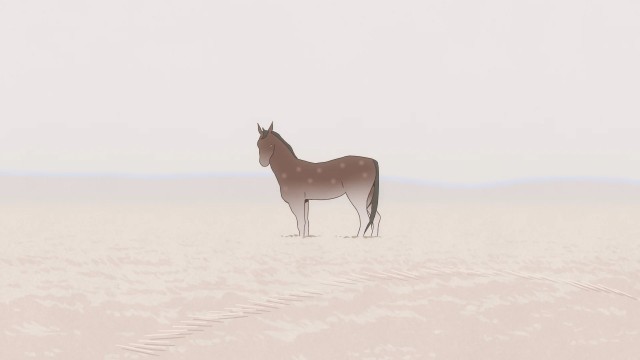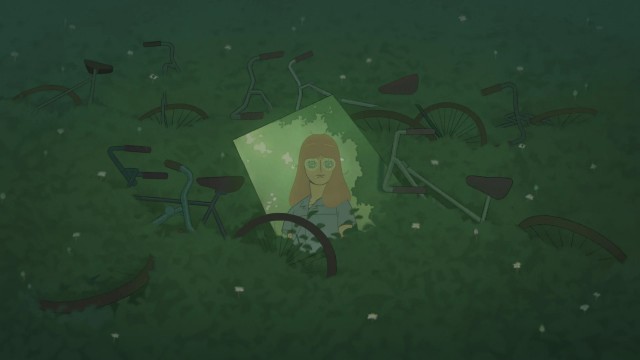There’s something about radioactivity that has always captivated me. It evokes a sense of both wonder and unease, a duality perfectly captured in the latest Gobelin’s short, Wormwood. This 2D traditionally animated short plunges us into a world where the familiar mingles with the eerie, blending subtle sci-fi elements with a beautiful aesthetic to challenge our perceptions of safety and existence.
Directed by Matthieu Dupille, Chenhe Liu, Philémon Martin, Ninon Quemener, Alexander Vanderplank, and Binlin Xie. Wormwood opens with a subtle yet haunting scene: a voiceover from protagonist Simon as a child, playing with his mother, is interrupted when a foreign object falls from the sky, onto their small village. The moment is rendered so delicately that it almost romanticizes the devastation.
A decade later, Simon now working in a radioactivity monitoring station near the village with his colleague Agathe, makes a startling discovery – the radiation has suddenly disappeared. Over the next nine minutes, as the pair venture into a long-untouched area, the film’s stunning visuals perfectly complement its poignant narrative, delivering a story with unexpected emotional depth – especially impressive for a student production.

Wormwood is directed with a keen eye for the uncanny, and envelops us in a suffocating atmosphere where muted colors and an evocative soundscape set the stage for a journey into the unknown. With the character design at times feeling like it melds with the ground, this feels like their own attempt to connect to something more meaningful than just remaining alive. Simon and Agathe appear trapped, a stark contrast to the geese they talk about, which “are migrating early this year”.
However, as soon as Simon discovers it’s safe to enter the radiation zone and he believes these constraints are lifted, he runs to his childhood home and drowns in the objects that were once part of his life. Unfortunately for him, these objects feel frozen in time, serving as haunting reminders that you can never return to certain places/times, as revisiting them can become a frustrating trap. As we watch his character return to his home, it’s hard not begin reflecting on the fragility of life. This poignant exploration of survival versus existence resonates deeply, particularly in today’s world.
The animation style, grounded in traditional 2D techniques, enhances the film’s dreamlike quality, making it a visual treat. Wormwood truly excels in its detailed animation, as the shots – the explosion, Simon cutting the rope, the sun breaking through the leaves, Agathe taking off her glasses – the team decide to pay special attention to are the ones that control the pacing of the story and give it personality.

Compare this to the Gobelins film we featured just a week ago, Layla, and the differences couldn’t be more striking. With that previous film all about youthful exuberance – bold lines and quick cuts – Wormwood exudes a more mature tone, its design and storytelling handled with greater delicacy. Both films serve as eye-catching calling cards for their creators, each highlighting a unique style that is sure to capture the attention of different corners of the industry.
Wormwood’s lingering impact comes from the fact that it challenges us to confront the discomfort of our own existence and the choices we make, all delivered with a soothing voice that leaves you feeling contemplative rather than uneasy. As huge fans of the Gobelins graduation films, we have to go back to 2017 for the last time we featured two of their shorts – Quand J’ai Remplacé Camille and Parfum Fraise – in the space of a week. With Layla and Wormwood already setting a high standard for the 2024 lineup, we can’t wait to see what the rest of the shorts have to offer.

 Mariana Rekka
Mariana Rekka